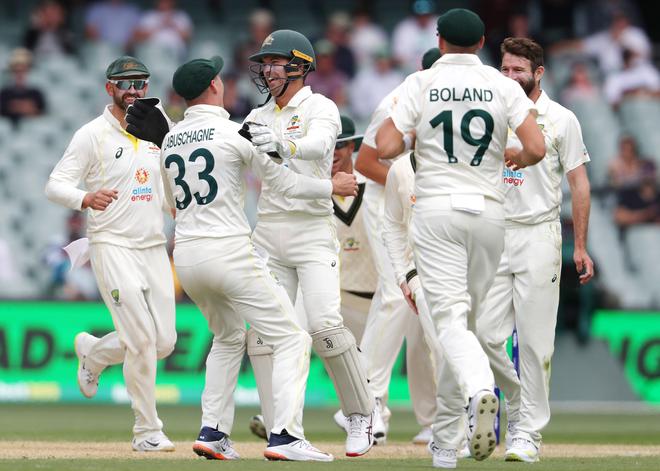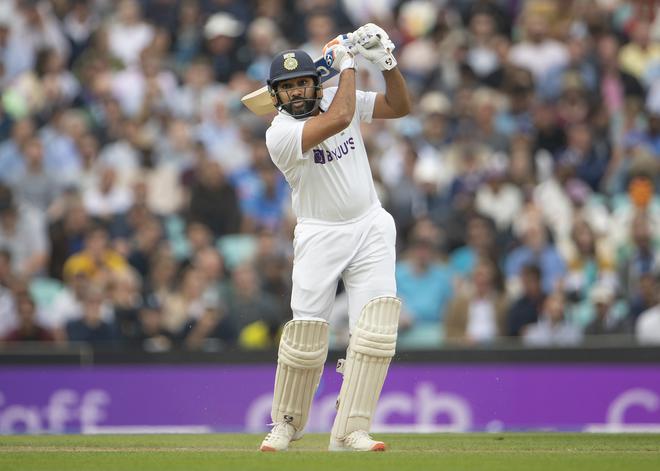

India will be banking on a glorious, relatively dry English summer as well as its recent Test record against Australia to end a 10-year global title drought.
After the Champions Trophy triumph in England in 2013, the team has come close in major ICC tournaments across formats only to flounder, often in the semifinals. But having made the World Test Championship final for the second consecutive cycle, the side will be keen to go one step further than it did in 2021, when it lost to New Zealand in cold, rainy Southampton.
This time, the opponent is formidable Australia but India will enjoy a psychological edge, having beaten the Aussies in four successive Test series, twice at home and twice away.
Unique challenges
It must be noted, however, that a one-off Test on neutral territory alters the nature of the contest and presents unique challenges. Teams need to adapt quickly and start strongly because there is less time to work with. A four-match series allows a side that falls behind more opportunities to come back than a solitary Test.
Given the injuries to key Indian players, Australia is the favourite in the WTC final to be played at The Oval from next Wednesday. On paper, it’s a complete side, with no obvious weakness.
It has one of the most audacious openers in modern cricketing history, even if he no longer is the force he once was, in David Warner, the silky-punching Usman Khawaja, that frighteningly freakish cricketing spirit called Steve Smith, the method artist in Marnus Labuschagne, the brutal counter-puncher in Travis Head and the towering all-rounder Cameron Green.
Add a proven bowling attack, with pacers Pat Cummins, Mitchell Starc and Josh Hazlewood, who can each win a match in a five-over spell, and veteran off-spinner Nathan Lyon, and you can see why India will have its task cut out.
If there is a deficiency within the Australian squad, it is their minds. There are self-doubts. Allan Border was rock-solid, stubborn. Mark Taylor wore the thinking hat all the time. Steve Waugh put his body and soul on the line for victory. Ricky Ponting led by his brilliant batting. Cummins, in contrast, is admired by his men, as was Tim Paine before him, but neither commands the opposition’s awe purely as a skipper. This allows a crafty team like India to creep into the crevices of the Aussie minds and beat them on their own turf repeatedly.
Eye on the conditions
But this final will be played in London, not in Australia. A lot will depend on the conditions. India had the worst of it in the 2021 final after losing the toss under overcast skies on a Rose Bowl pitch that suited the four-man Kiwi pace attack.
As per early forecasts, The Oval could be basking in sunshine for the duration of the game as the summer unfurls in the magical countryside of Britain. The ground has historically favoured batting. Spinners get into the contest later in the Test if it is dry, but the fast-bowlers, unless there is cloud cover, do not receive the same assistance they do at other English venues.
If it is sunny, India can fit both Ravindra Jadeja and R. Ashwin in the XI for the right reasons unlike in 2021. Instead of playing four pacers in seaming conditions against New Zealand, the team management fielded both finger-spinners. Kane Williamson, an astute thinker of the game, played none. To tell the truth, the whole landscape was missed in plain sight.
India did not include Mohammed Siraj and Shardul Thakur, who fashioned the greatest Indian overseas victory in Australia in the absence of the pace spearheads in 2020-21. Both would go on to prove their worth again in the Test series that followed in England.
With Ashwin and Jadeja on a typical Oval surface, India should be able to play the waiting game to perfection and go for the kill when it spots the opportunity. Like B.S. Chandrasekhar did in 1971 to give India its first Test victory on English soil. Fifty years later in 2021, India beat England again at The Oval, thanks to Rohit’s first Test century outside India and the four seamers contributing handsomely. Jadeja, the lone spinner, took four wickets in the match.
However, given the fickle English weather, India will again have tricky decisions to make if the conditions are overcast because its squad is nowhere near complete. The injuries to Rishabh Pant and Jasprit Bumrah deprive captain Rohit of two proven match-winners.
Gaping hole
Pant’s absence has created the biggest gaping hole. It can’t be filled now. The possibility of asking K.L. Rahul to keep and bat in the middle-order disappeared with his injury during the IPL. The purists would want K.S. Bharat to have the gloves in English conditions. But India has also picked Ishan Kishan, a pocket dynamo, which suggests that it wants an aggressive option.
India’s batters will have to make substantial first-innings runs, something they failed to do in the 2021 final. Considering their recent records in admittedly challenging batting conditions across the world and Pant’s absence, you can see why playing both Jadeja and Ashwin to also bolster the batting appears so attractive.
Shubman Gill is coming off a phenomenal IPL season, but can that form transfer to red-ball cricket? Rohit will have good memories of The Oval, but his touch during the IPL was at the other end of the spectrum to Gill’s. Cheteshwar Pujara, Virat Kohli and Ajinkya Rahane, for long the bedrock of the batting, have not consistently asserted their supremacy in recent times.
In fact, Rahane only made the team because Shreyas Iyer was injured. His inclusion after being dropped last year raises questions. Was it just his IPL form? What did the selectors make of his Ranji season? Is it merely a stopgap arrangement for a one-off final because of his experience?
There are also other questions regarding the composition of India’s playing XI. If it’s damp and cloudy, should India pick its lone seam-bowling all-rounder in Shardul instead of Ashwin? Yes. He has won matches for the country with ball and bat, one being The Oval in 2021.
Mohammed Shami will lead the attack, like he did terrifically last time. Siraj is indispensable for his craft, enthusiasm and aggression. But the identity of the third seamer leads to another question. Will it be Umesh Yadav, who had a good Oval Test in 2021, or Jaydev Unadkat, whose left-arm angle, batting doggedness and domestic winning pedigree offer something different?
India certainly has more questions to answer than Australia in the latest iteration of modern Test cricket’s biggest rivalry. If Rohit and his men are to get their hands on the championship mace, they will have to come up with convincing answers.







